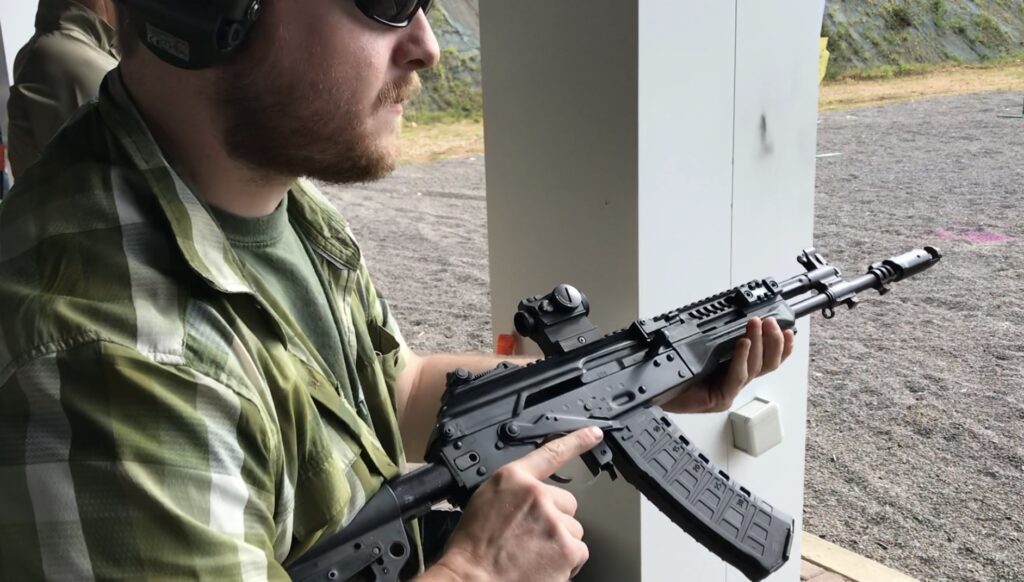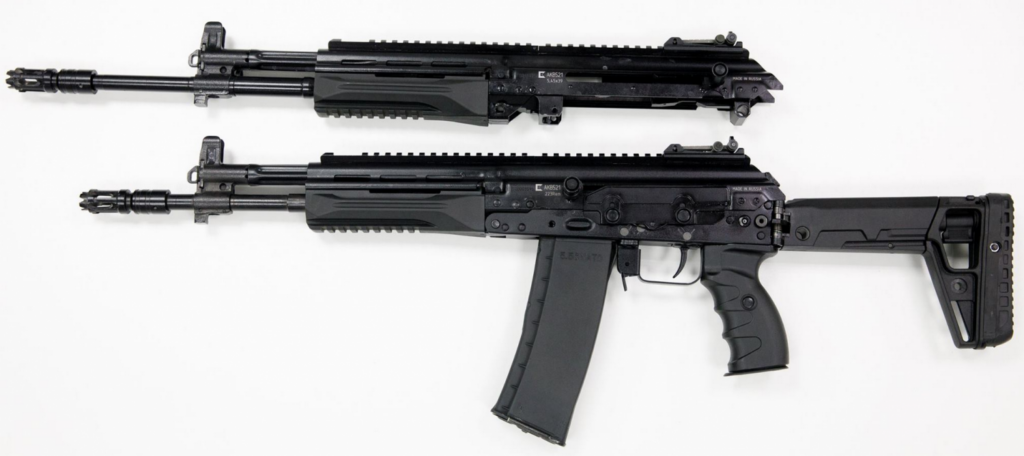The world of firearms is constantly evolving, and one of the most iconic names in the industry is the Russian Kalashnikov series of weapons. In recent years, the development of the AK-12, the latest addition to this legendary series, has been closely monitored by enthusiasts and military experts alike. This article delves into the latest developments surrounding the AK-12 and explores the potential future of Russian assault rifles.
When people think of the latest Russian small arms development, they naturally think of the AK-12. The design attempted to bring the venerable Kalashnikov pattern into the post-9/11 world of rails, optics, and force multiplier accessories. Though this could be done with the help of third-party accessories on the old AK platform, the AK-12 made the gun out-of-the-box ready for all the gadgets promised from Russia’s defense budget. However, anyone familiar with military procurement and weapons deployment will know that often the shiny and new platforms have to wait for production to ramp up, for budgets to be finalized, and more often, for the “good enough” older platforms to break down.

For this reason, when the war in Ukraine began, I was skeptical of the AK-12 having any significant use. The AK-74m and AK-100 series of weapons were my best guess as the most common weapons to be used. Without access to classified or insider information, I used the old Cold War yardstick of looking at the May 9th Victory Day parades. In the years leading up to the 2022 full-scale invasion, only specialized units like airborne and naval infantry groups goose-stepped their way across Red Square with rifles strapped across their stripped chests. More troubling, or perhaps reassuring depending on your point of view, parts kits spirited into the United States and began to show that the AK-12 as the platform was not such a step forward as the Russians were hoping. Though the weapon is not the most common platform over there, it surprised me in how often it was captured by Ukrainian forces, or otherwise photographed by Russians themselves. Ukrainian forces routinely fight with captured AK-12s as a stopgap for dwindling Soviet stock, and latent production of Ukraine’s own AR platform, the UAR. The evidence shows that I was proven wrong. Russia has made a concerted effort to put the AK-12 into as many hands as possible, and what is more, the Russians are learning lessons from its deployment.

In response to these lessons, and possibly even criticism from international experts online, the weapon progresses through three iterations of the rifle: the model 2015, the 2022, and the 2023. Simultaneously, Tula, another famed site of Russian arms production, and Kalashnikov Concern have started to work on three new cartridges. In typical Russian fashion, Russia tends to copy a good design when they see one (just look at their automotive industry over the last ninety years). One possible new cartridge, the 6.02x41mm seems to compete with the US 6.8x51mm, as the US reconsiders its own formula for cartridge capability for its new generation of standard-issue small arms.
The 5.45×39 cartridge, which the AK-12 and the AK-74 platforms use, was its own response to the American use of .556 as a military cartridge in Vietnam- a high-speed micro-caliber round designed, let’s be honest, for varmint hunting, which could deliver high-energy onto a human size target. As everyone naturally remembers from high school physics, force equals mass times acceleration. Acceleration, of course, is speed squared. That means you get a big force multiplier for going faster while if you increase only mass, you get less bang for your buck than if you increase acceleration. Things get complicated in the real world, though. Things that are light also slow down with greater ease. Likewise, inertia also means that things with more mass take more energy to get going, but also take more effort to stop. It’s why we use high-mass uranium ammunition to break through tank armor like butter. Similarly for soft targets, you’d like a round that ideally passes its energy into the target without penetrating, or else that energy is lost in the pass-through. Okay, the physics lesson is over, but the Russians have been paying attention to this balancing act between speed and mass that every weapons engineer has been dealing with ever since forever.

In 2020, the Tula Cartridge Plant and Kalashnikov Concern began running the numbers on 6.7x45mm, 6.5x39mm and 6.02x41mm. The ideal round would need to have a manageable recoil impulse for automatic fire but still meet penetrating action values. After all, the goal of the round is to deal with modern body armor-clad targets, without being unmanageable for basic conscripts. The initiative selected the 6.02×41 as the most optimal candidate. To compare the round to 5.45×39 and 7.62×39, the round has superior kinetic energy at extended distances, maintaining armor-piercing capability up to 900 meters, according to Kalashnikov Concerns own publications. This is due to the bullet shape and improved external ballistic capabilities. Once again, the mission set of the cartridge matches the American 6.8x51mm, which similarly attempts to bring full-powered ballistics to intermediate cartridges to defeat Chinese and Russian body armor threats. However, this new Russian cartridge would need a weapon.
The AK-22 and SVCh:
To test the potential of the 6.02x41mm caliber, Kalashnikov Concern has modified a standard AK-12 model into the AK-22, showcasing its adaptability and versatility. AKs surprisingly accommodate re-chambering well. Additionally, the SVCh (Sniper Rifle, Large Caliber), which seeks to replace the SVD Dragunov, has been chambered for the 6.02x41mm cartridge. As an aside, there is talk of developing a new cartridge to replace the aging 7.62x54R. This could lead to the creation of a new general-purpose machine gun (GPMG) to rival the nascent U.S. 338 Norma Magnum lightweight medium machine gun program. These two short and long platforms allow for ballistic testing and overall weapon handling for the round. Though the SVCh platform, due to barrel length and inherent accuracy, is likely to see the top-level performance of the round, the Russians (to date) have avoided a return to “battle rifles” for standard-issue military arms. Kalashnikov Concern recently completed a three-year contract to supply AK-12 rifles to the Russian Ministry of Defense, reportedly ahead of schedule. There is certainly a need for more rifles as the war progresses and resources are lost.
The future of the 6.02x41mm cartridge and the potential adoption of the AK-22 and SVCh for special military operations in Ukraine remain uncertain but intriguing possibilities. Will the Russians change horses mid-stream or will they introduce an experimental program as they did for the 7.62×39 in the waning days of the Second World War? History will show how these discussions will play out.

One critical consideration for the future of Russian assault rifles is ensuring that new developments outperform their predecessors. The AK-12 faced criticism for not significantly surpassing its predecessor and lacking widespread adoption of optics. Russia will certainly take notice of these past experiences, such as the U.S. Advanced Combat Rifle program, to create competitive offerings like the Vortex XM157. This will likely cause some hesitancy in adopting the cartridge any time soon. Beyond the AK-12, Russian firearm developers are considering the AM-17 series, Russia’s monolithic upper receiver rifle, which offers compact and full-size rifles in various calibers, with a focus on reducing weight and improving ergonomics. The platform takes on the challenge of the AK’s rigid receiver design and limited optic mounting options over the top of the receiver. The AKV-521, described as “the 500 Series AK,” addresses these challenges as well, radically changing the AK’s function to incorporate a lower receiver hinge vaguely reminiscent of an AR-15. The RPL-20, a belt-fed light machine gun, rechambered in 6.02x41mm, could potentially fill the role of the US M249 or the new XM250. However, such a transition would require doctrinal changes in how Russia deploys and employs light machine guns and GPMGs.
Russia is entering an exploratory phase of weapon design, learning from its “Special Military Operation” in Ukraine, and striving for continuous improvement in its small arms and equipment. It remains to be seen what path it will take, but the development of the AK-12 and exploration of new calibers, along with potential alternatives like the AM-17 and AKV-521, demonstrate Russia’s commitment to staying competitive in an ever-evolving global arms race. As the future unfolds, the Russian firearms industry will play a crucial role in the nation’s defense capabilities.







